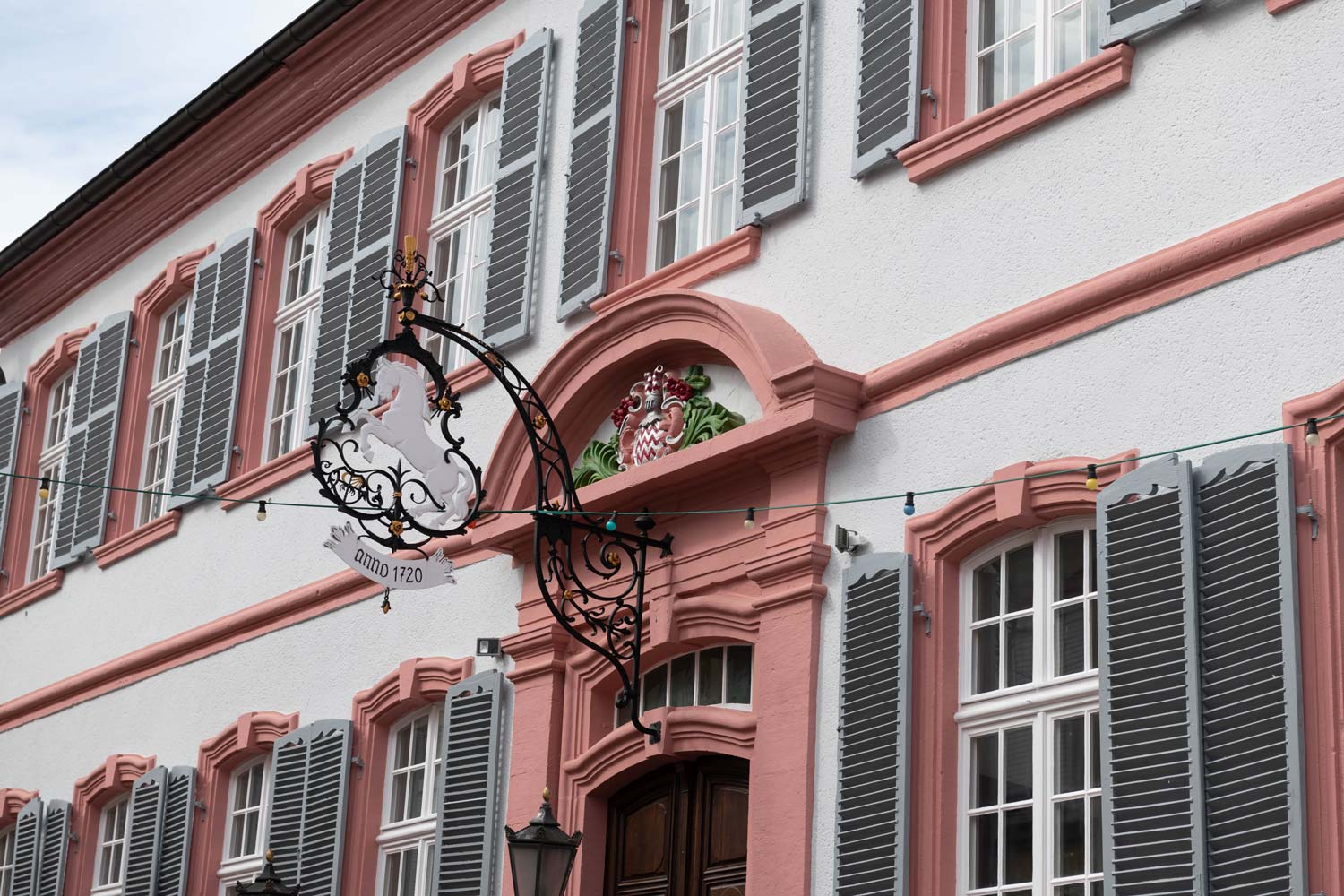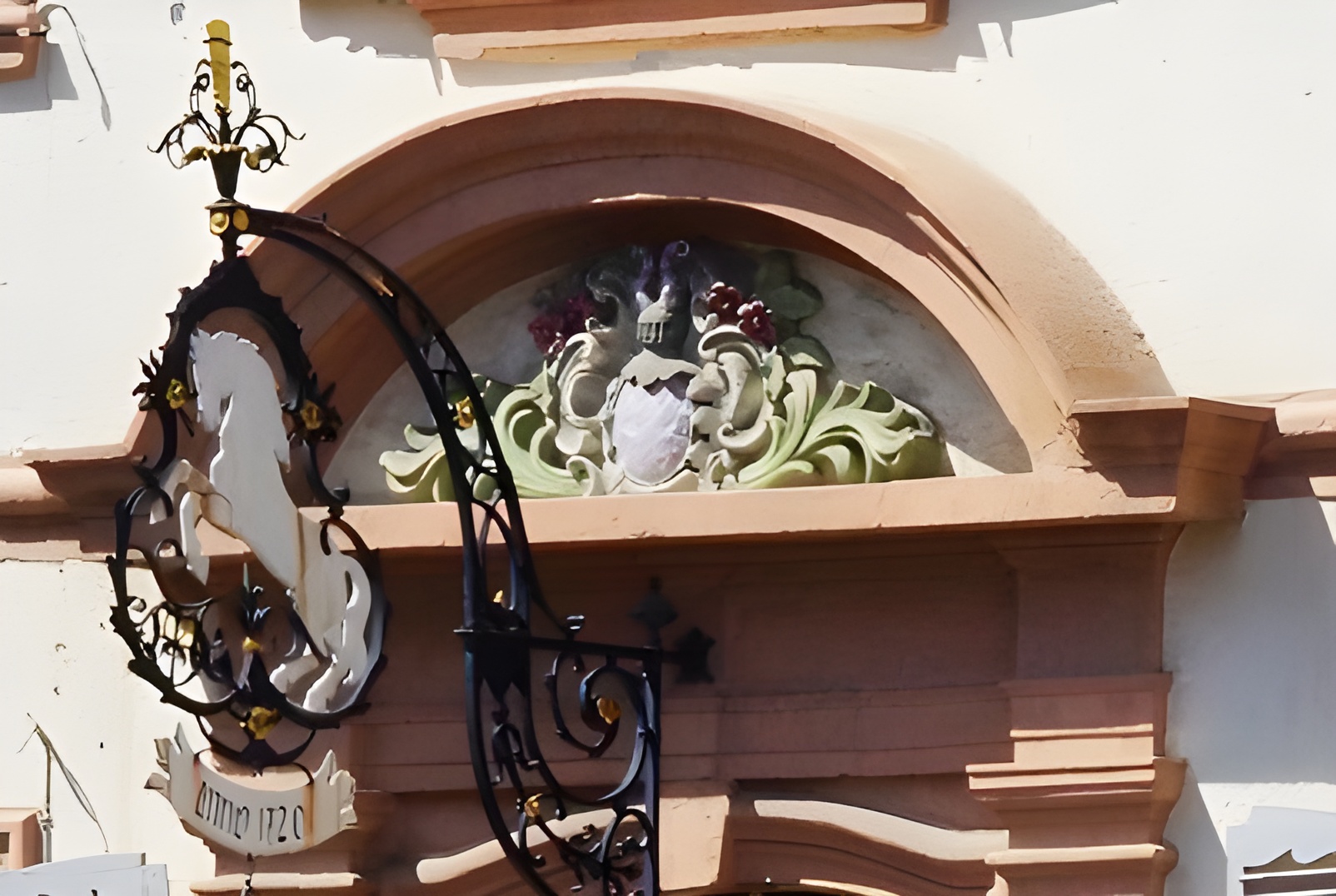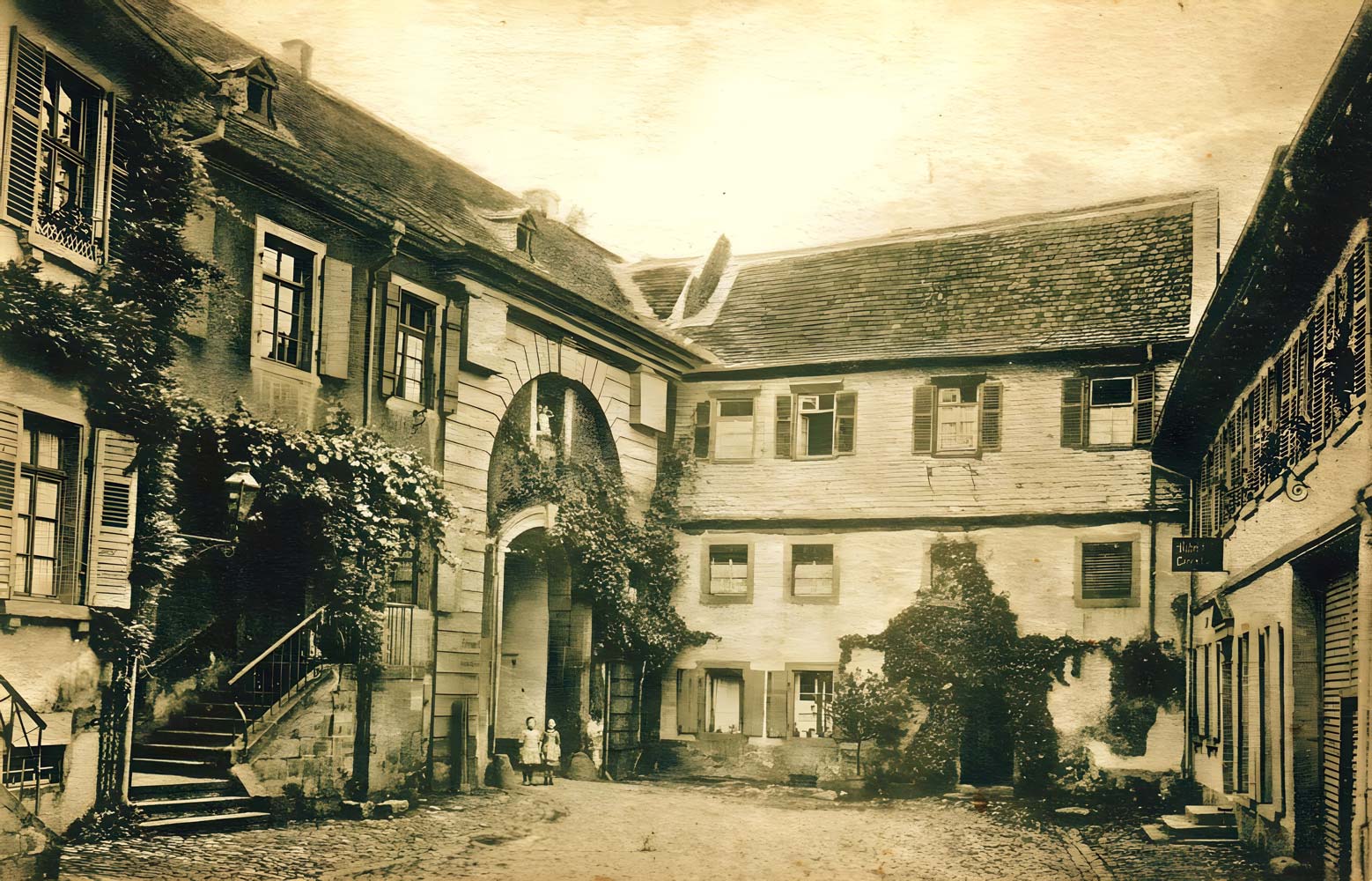“To the white horse”
Noble family of Geispitzheim
The Geispitzheim name series existed from the High Middle Ages until the 18th century. As early as 1083, a document from the monastery of St. Alban in Mainz mentions “Appo von Geisbodenheim”. A century later, “Wernherus von Geispoldsheim” is mentioned in the fief book of Werner II von Bolanden. The name of Geispitzheim then crystallized in the 14th century. In particular, numerous documentary references and coats of arms (three serrated beams as well as above the portal of the “White Horse” in Kirchheimbolanden) point to Gabsheim in Rhine-Hesse (10 km north-east of Alzey).
Members of this noble family were mainly active in administrative and princely services, including Philipp von Geispitzheim in 1421, bailiff in Kirchheimbolanden, and Georg Emrich II (died 1794), senior bailiff and later court marshal at the Nassau-Weilburg court in Kirchheimbolanden.
The Geispitzheim town palace here clearly shows what was achievable for a family of the lower nobility in princely service.


Manorial cattle yard
In the 18th century, the manorial estate also included areas for economic supply. In Weilburg, as in Kirchheimbolanden, there was a “cattle yard” in the immediate vicinity of the castle, in Weilburg even as an integral part of the extensive castle grounds. Laid out in a horseshoe shape, it was also connected to a “hay barn”.
The situation was similar in Kirchheimbolanden. Here, the “cattle yard” was located in the area of Schlossstraße 32/34 and the “hay barn” connected to it on the site of today’s house at Schlossstraße 35. A horseshoe was also modeled here, as Schlossstraße opens up from the Schlossplatztor gate towards the “White Horse”.
However, the properties at Schlossstraße 32, 34 and 35 no longer reveal their former commercial functions. Today, all three have neoclassical façades from around 1835, after a fire on June 13, 1833 had severely damaged the entire area.
